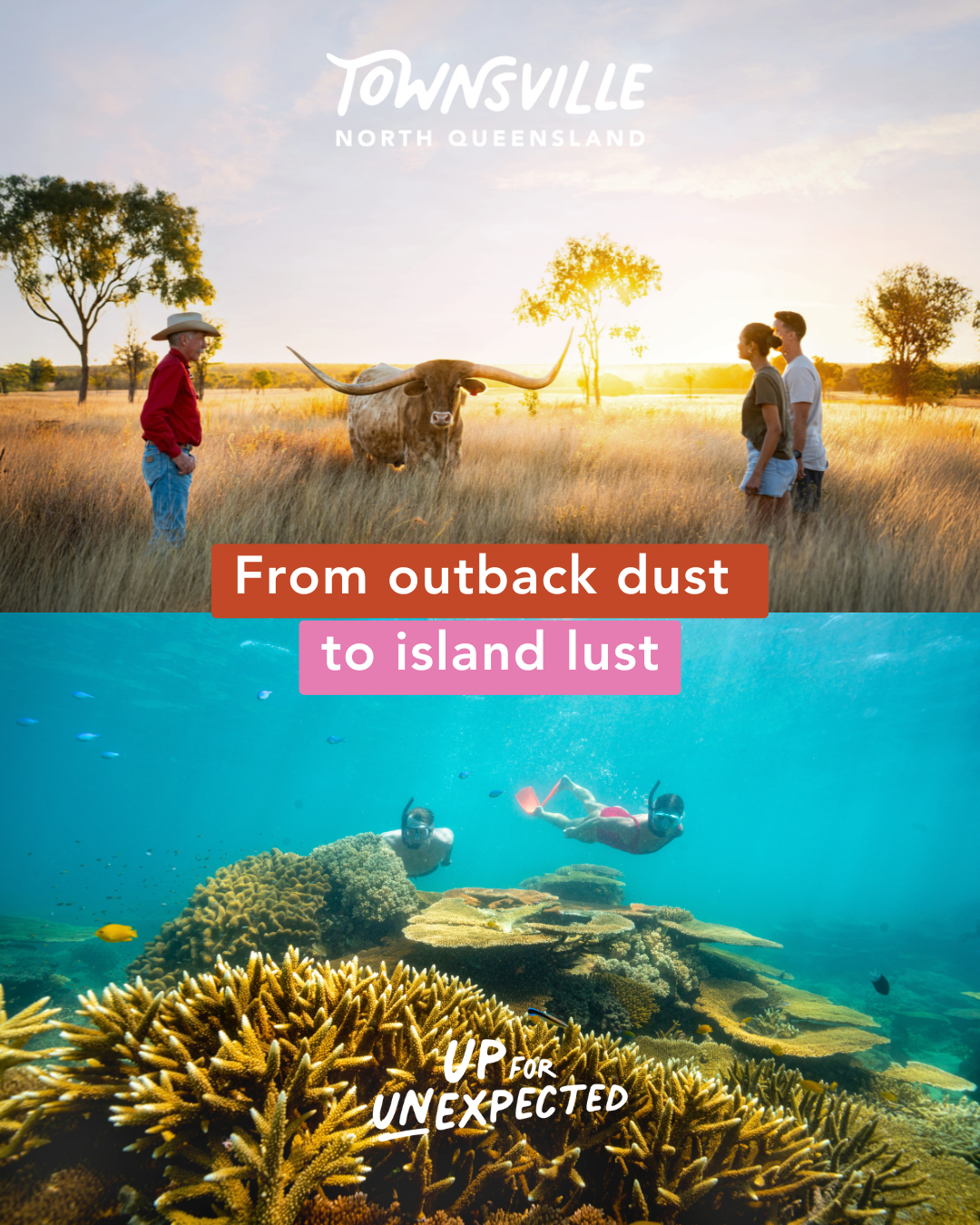Tuesday October 21, 2025
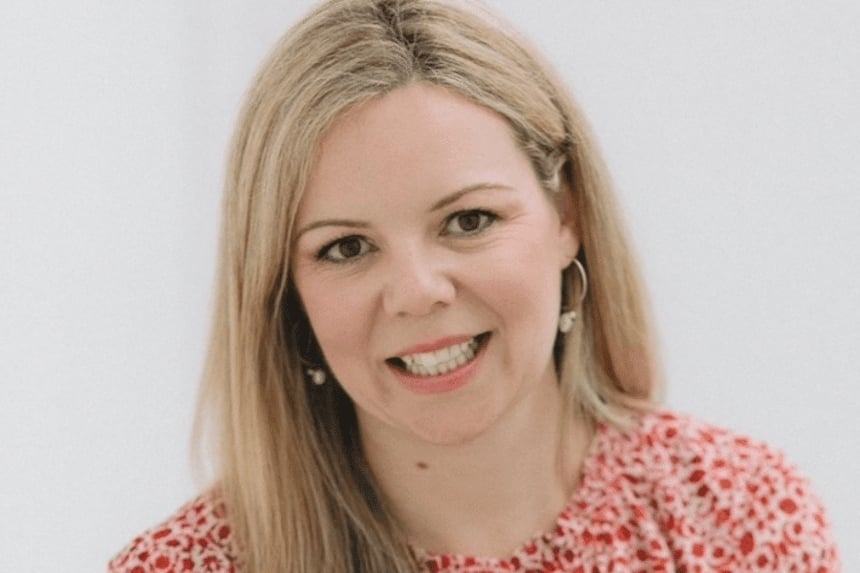
Havas Media appoints Mindshare’s Kate O’Ryan-Roeder as CEO
Havas Media has confirmed the appointment of Kate O’Ryan-Roeder as CEO, marking a strategic move in the agency’s evolution in Australia.
O’Ryan-Roeder comes to Havas from the Managing Director role at Mindshare in Sydney, bringing a track record of digital innovation, client investment growth and strong operational leadership.
During her tenure, she led a team of nearly 150, oversaw a bespoke agency for LVMH, and helped secure major new business including the recent win of MG.
In her new role, O’Ryan-Roeder will be tasked with driving Havas Media’s next phase of growth, one that emphasises data-led media strategy, integrated services across the Havas Village model and deeper client outcomes in a rapidly shifting media market.
With O’Ryan-Roeder at the helm, Havas Media Australia is setting the tone for a bolder, more integrated role in the media execution and outcomes space.
She will lead national operations across Australia and New Zealand with a firm focus on product investment in media, AI, technology and data, and on fostering deep collaboration across creative, media, PR and publicity, public affairs and health within the Havas Village model.
James Wright , Group CEO Havas ANZ, Global CEO Havas Red and Global Chair, Havas PR Network, said the appointment follows a highly competitive process, “We were very humbled by the huge interest we had in the Havas Media CEO role and got to meet some incredibly talented candidates.
“Kate stood out from the get-go with a wonderful blend of smarts, savviness and strong client and people skills. We are about to embark on a very exciting period of investment and transformation at Havas ANZ that will further showcase our difference in the market and Kate leading the Havas Media Network is going to be a huge driver of this.”
O’Ryan-Roeder said she was delighted to take up her new position. “I am absolutely thrilled to be joining the Havas team come January.
“What truly inspired and resonated with me was the sense of shared values and purpose and I’m excited by the unique Village approach — it’s a powerful way to deliver exceptional results for clients and cultivate a truly collaborative and supportive environment for our people.
“The vision for ANZ that James and Havas has in the next years is bold and transformative, and something I wanted to be a big part of.”
Maria Grivas, CEO of Mindshare Australia & New Zealand wished O’Ryan-Roeder well in her next role, adding that Mindhsre was sad to see her leave.
“Kate has made a meaningful impact at Mindshare, both in Sydney and globally,” she said. “Her thoughtful leadership, care for clients, and commitment to culture have helped shape who we are today.
“While we’re sad to see her leave Mindshare, our heartfelt congratulations go to her as she steps into this exciting new chapter as a CEO, and we wish her every success.”

Spotify's game-changing play for the ARIA Awards
The ARIA Awards are stepping firmly into the streaming era, with Spotify joining as presenting partner in what ARIA CEO Annabelle Herd has called “a game-changer” for the event and the wider Australian music industry.
“When Spotify approached us with an incredible proposal to take the ARIA Awards to the next level, using the platform, its tools, and all the resources at its disposal to really promote and celebrate the nominees and artists, it didn’t take long for us to see that this was going to be a game-changer for the awards,” Herd told Mediaweek.
It’s more than a brand alignment – it’s an evolution.
The partnership transforms the ARIAs from a traditional television broadcast into a globally networked, streaming-first platform, leveraging Spotify’s technology, reach, and AI-powered music discovery tools to amplify Australian artists like never before.
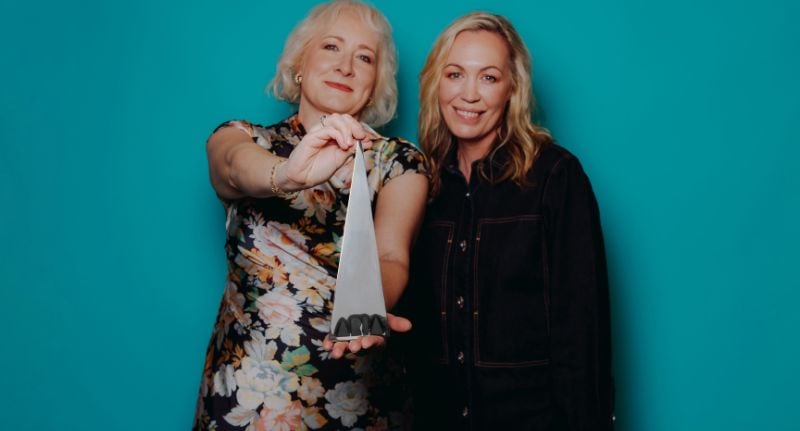
ARIA CEO Annabelle Herd, and Spotify AUNZ Managing Director Mikaela Lancaster
From broadcast to digital ecosystem
The three-year partnership aims to make the ARIAs as discoverable online as they are iconic on television. Spotify AUNZ Managing Director Mikaela Lancaster told Mediaweek the collaboration was born from a shared mission to “elevate Australian artists” and give them a louder, more global voice.
“The ARIA Awards are such an important moment for Australian music, and we both share a common goal, elevating Australian artists,” she said.
“Last year, we saw a spike in streams for ARIA nominees and winners, and it got us thinking: if that’s the organic impact, imagine what we could achieve as an official partner with the full weight of our platform, marketing, and investment behind it.”
Through in-app programming, editorial curation, and even a curated event, Spotify will extend the life and reach of the Awards long after the broadcast.
The platform has already launched an ARIA Hub featuring category playlists, behind-the-scenes content, and voting for publicly decided awards like Song of the Year and Best Video.
“It’s about being where audiences are,” said Herd. “Connecting music with listeners not just in Australia, but around the world.”
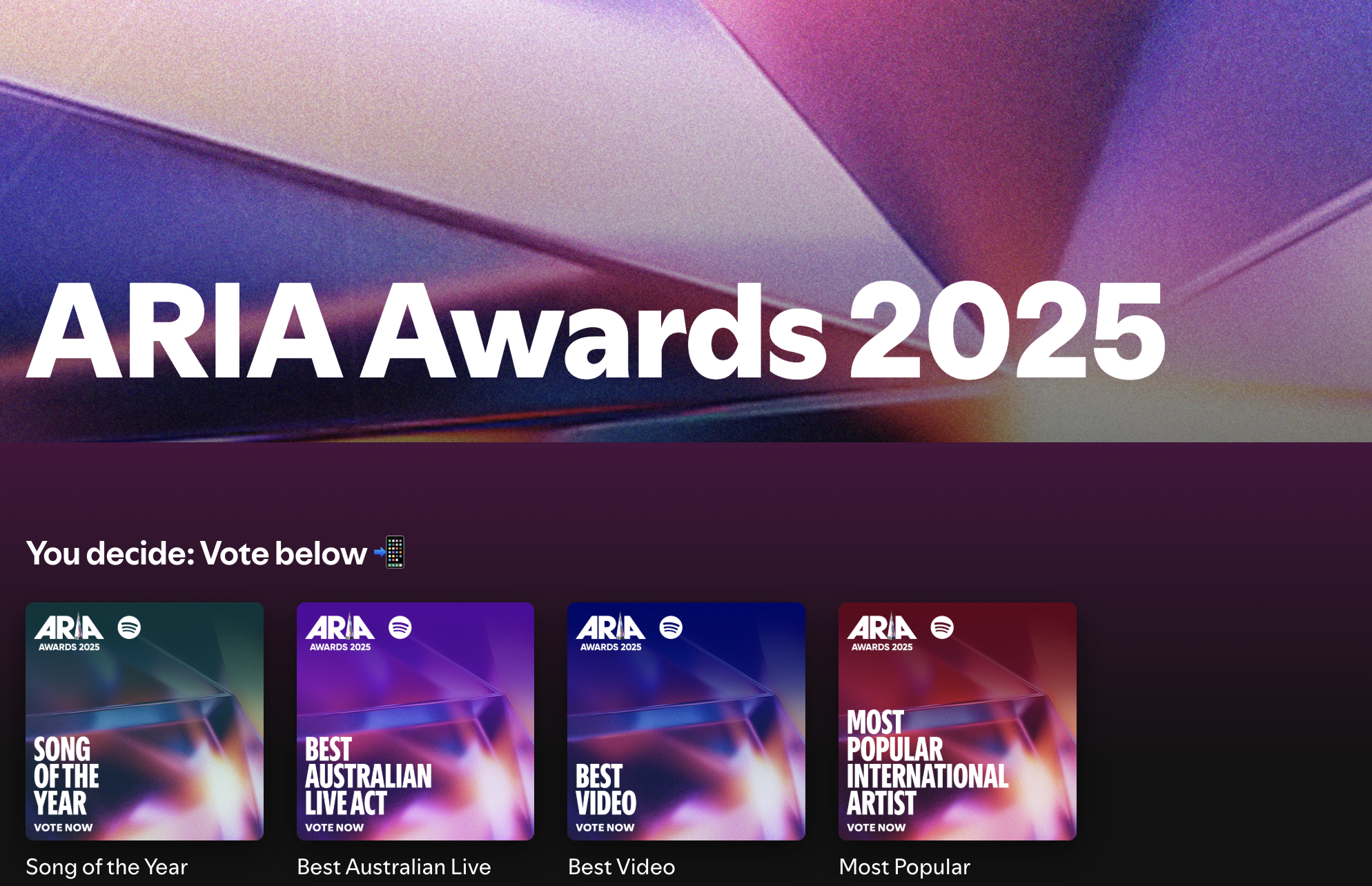
A new frontier
For Herd, the partnership marks the next phase in ARIA’s post-COVID evolution. After years of rebuilding the event, she said the goal has always been to position Australian music within a global context.
“We’ve really been rebuilding the ARIA Awards since COVID, when everything came to a standstill,” she said.
“Our goal has always been to put Australian music on a global stage, to create an elevated, aspirational event that makes Australian artists feel like they’re part of a global music industry, which they absolutely are.”
That global ambition is being powered by Spotify’s international reach.
Lancaster said the streaming giant’s scale will allow the Awards to extend far beyond the broadcast. “Winners will soon feature across high-impact out-of-home placements around the world, including London, New York’s Times Square, and even Cairo,” she said.
Both leaders agreed the partnership is about more than exposure, it’s also about values.
Herd said ARIA wanted to align with a technology company that genuinely supports creativity. “From an ARIA perspective, we feel strongly that we’re aligning with a tech company that genuinely supports creativity,” she said.
“A recent example is the joint statement from major record labels and Spotify committing to only use copyright-protected works when developing AI tools and products.”
Lancaster added that this stance reflects a broader shift toward responsible innovation in the creative industries.
“We’re developing AI tools for artists, with the foundations built around protecting their copyright, and that’s something that truly sets us apart,” she said.

Knobby is delivering the dream world we were promised where all underpants are NFC enabled
Australian underwear company Knobby launched into a world where direct-to-consumer social media sales were still in their relative infancy. Launching just over ten years ago there were local mattress companies like Koala just getting started, with selling DTC primarily through Facebook and Instagram a pretty big, untested gamble.
Today, Knobby is still going. Based out of the Sunshine Coast, it has a large national footprint with its subscription business alongside a thriving online store. It has also opened a local bricks and mortar store and has found success with a Knobby vending machine located in Sydney’s T2 Domestic Airport. And now it has a bold plan to deliver NFC underpants bridging the experiences of textiles and digital.
View this post on Instagram
The company still relies predominantly on marketing through social platforms, but is working towards diversifying its channels more. In a conversation with Mediaweek, founder Rob Rand said that “It’s very easy to get on that Meta drug where it’s all just Meta paid advertising. We’re now getting into more traditional media as well, to Outdoor… we’ve got a retail store too, which has been great for us.
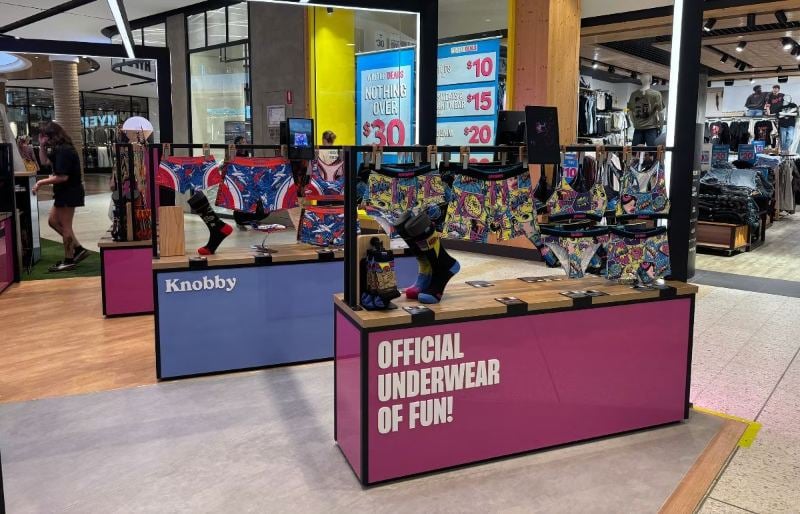
“A lot of on-the-ground activations too. That’s been really good for awareness. We do a thing called the ‘Undie Exchange’ and it actually works so well. We have these portable change rooms, a big perspex container, and people just come in and they just take off their old underwear, put on a new pair of Knobbys and that’s it. It’s really good to be able to get people in the product. Once they’re in the product, they generally stay in.”
Rand told Mediaweek about a recent report he received from Australia Post about its distribution footprint. “They were quite surprised at how much of a rural focused customer base we have over Metro. Not to say we don’t have Metro, that’s significant… but it’s just how we’ve managed to reach those rural areas.”
What is Knobby?
The subscription business still accounts for around fifty per cent of Knobby’s sales. For around $25 a month, the company mails a new pair of underwear to your house, each month with a different, bold art design. The company started selling just boxers for men, but have since expanded their line to include underwear for women and kids.
The company also sells one-offs and seasonal items like Christmas-themed underwear. Knobby claims a new pair is sold every 36 seconds.
It’s a company that continues to grow. In August Knobby was announced as a brand partner and supplier for the Australian Olympic team ahead of the Milano Olympics next year.
Sustainability is core to the brand, using a ‘BottleBlend fabric’ made with recycled plastic bottles. It also sells pairs using fibres crafted from raw wood.
The underpants of the future
Knobby also has a future-forward perspective, with all of Knobby’s underwear set to be NFC enabled.
A recent PAC-MAN limited edition pair enabled users to scan their underwear with their phone, which would open up a phone browser to let users play a game of PAC-MAN. A novelty, sure, but it opened the door to what was possible with the technology.
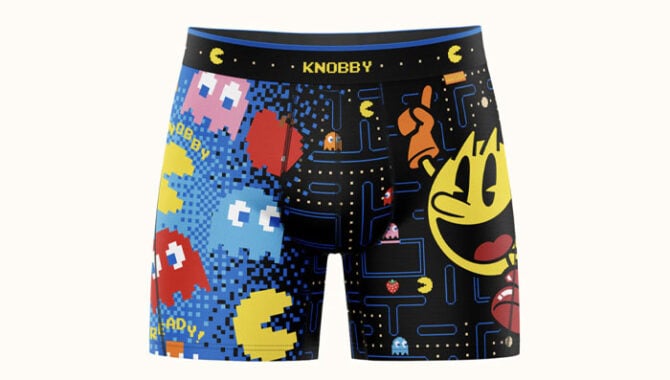
Rand explained that “We wanted to find a way where we could eventually one day connect the customer more with the product and where they could start to ask questions like ‘how many washes is it had?’ Or start to gamify it more as well – by just holding your phone near it you can turn the underwear into augmented reality experiences as well.
“Our biggest challenge for a long time is closing the gap between like a print and digital. We’re slowly getting closer to that now, which is super fun.”
There are also plans to enable customers to use the NFC capability to track the origins of the material in their purchases, connecting the user with the brand’s promise of sustainability.
The origin story
The idea to launch the business came from Rand living in Far North Queensland while his wife was doing country service as a teacher. He would see the locals queue at the local post office for mail, which arrived just three days a week in the town that he said has more cows than people.
He was also keen to lean into his creative passions. Rand recounted: “I really wanted to create artwork on textiles, but something that wasn’t so trend and fashion driven. Something like underwear is great because it’s so far from fast fashion because you can wear it forever and nobody’s ever going to judge you.
“It was cool. Somebody could wear bright pink floral unicorns and no one would ever know. But it might empower them.”
These days it isn’t Rand doing the art. The business has a couple of graphic designers and a product designer on staff. They’re also working to get more external artwork too so that they can avoid it looking too much like it has an in-house style.
Rand launched Knobby with the subscription model, which he admits was challenging at first.
“This is coming off the back of 24 month phone plans where people felt like they never get out of them. So we had to re-educate people that you’re not going to be locked into anything.”
The subscriptions were also a great motivator to keep the business moving forward.
“You had an obligation that you had to deliver that product to that customer every single month. They’re expecting it. It wasn’t like a traditional e-commerce store. The first day I sent out the very first pair, I was like: ‘Whoa, they’re expecting this every month now’. I couldn’t just contact them and say: ‘Hey, you’re not getting this anymore’.”
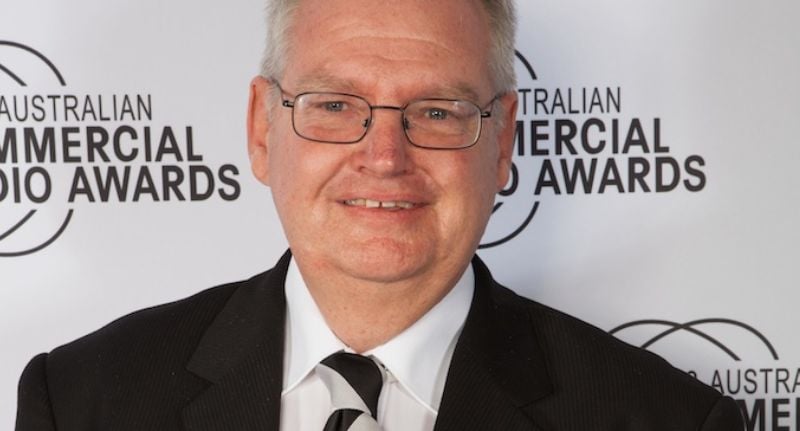
Regional radio loses a visionary: remembering Kevin Blyton
The radio industry is in mourning, following the death of Kevin Blyton, founder of the Capital Radio Network.
Blyton passed away on Sunday, 19 October, at Cooma Hospital following a cardiac arrest.
Blyton’s passion for broadcasting began early. At just 19, he purchased his first station, 2XL, in 1978, laying the foundations for what would become one of Australia’s most significant independent radio networks.
Over the decades, the Capital Radio Network grew to include XLFM and SNOW FM in the Snowy Mountains, 3GG in Gippsland, 2CA and 2CC in Canberra, GNFM and EAGLE FM in Goulburn, and 6iX in Perth, alongside a suite of digital stations such as 60s Music and 70s Music.
Blyton’s long-time friend, former Austereo CEO, and Managing Director of March Media Brad March told Mediaweek he will be “greatly missed”.
“He was a great friend, mentor and confidante. He was always the smartest person in the room and he had a wicked sense of humour. Kevin was the most resilient person I’ve ever known, widely respected, strong, always the hardest worker and was a major influence. He always had my back. We shared many great times,” March said.
A broadcaster, entrepreneur and advocate
Blyton’s contributions extended far beyond the studio. He was inducted into the Commercial Radio Hall of Fame in 2013, recognised for his lifetime of work and advocacy for regional broadcasters.
Having served on the Commercial Radio Australia (CRA) board for 14 years, he was regarded as a steady voice for the needs of local media businesses.
Outside broadcasting, Blyton was equally entrepreneurial.
He expanded the Blyton Group into tourism and hospitality, acquiring the Charlotte Pass and Selwyn Snow Resorts, the Kosciusko Chalet Hotel, and the Snowy Mountains Airport in Cooma.
Snow Resorts Australia CEO Josh Elliott told Mediaweek he and Blyton had worked together for 20 years, adding that Blyton “made an extraordinary contribution to both the radio and snow industries over many decades.”
“His leadership, investment and vision created opportunities and careers for countless people, and his impact through those he mentored and supported will be felt for many years to come.”
His ventures also included local cinemas and transport services, reinforcing his deep connection to the region he called home.
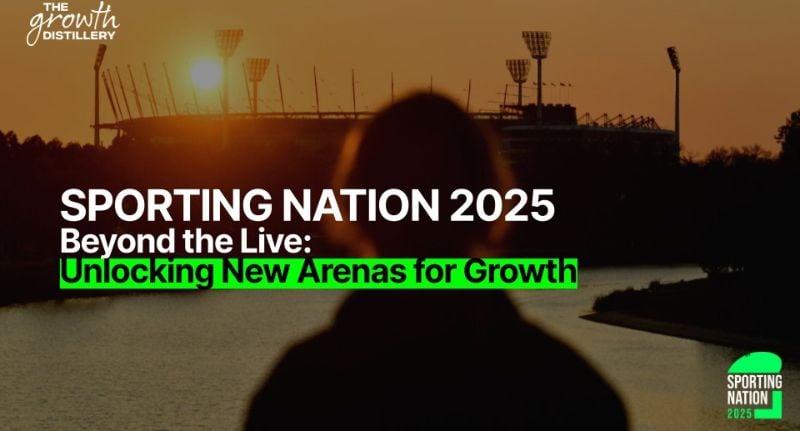
Aussie sports fans spend more time engaging with content than live games
Australian sports fans aren’t just glued to the big game anymore. According to new research from The Growth Distillery, fans are now spending more time consuming sports content during the week than watching live matches.
The report, Sporting Nation 2025: Beyond The Live, found that this shift is reshaping how fans engage, and how brands need to show up.
Since 2021, Australia’s sports audience has surged from 13 million to almost 17 million.
The average fan now follows five different sports, an 18% jump in just four years. But here’s the kicker: 54% of all engagement now happens outside of live game coverage.

Four new arenas for fan connection
The Growth Distillery’s study identifies four “arenas” where the real action is taking place beyond the field.
Fans are informing themselves through sports news and analysis; catching up via highlights and replays; entertaining themselves with podcasts and documentaries; and interacting through fantasy leagues, betting, and tipping competitions.
This multi-touchpoint behaviour means fans are constantly engaged, even when the scoreboard isn’t running. It’s a massive opportunity for brands to show up in new ways, across different moments and formats.
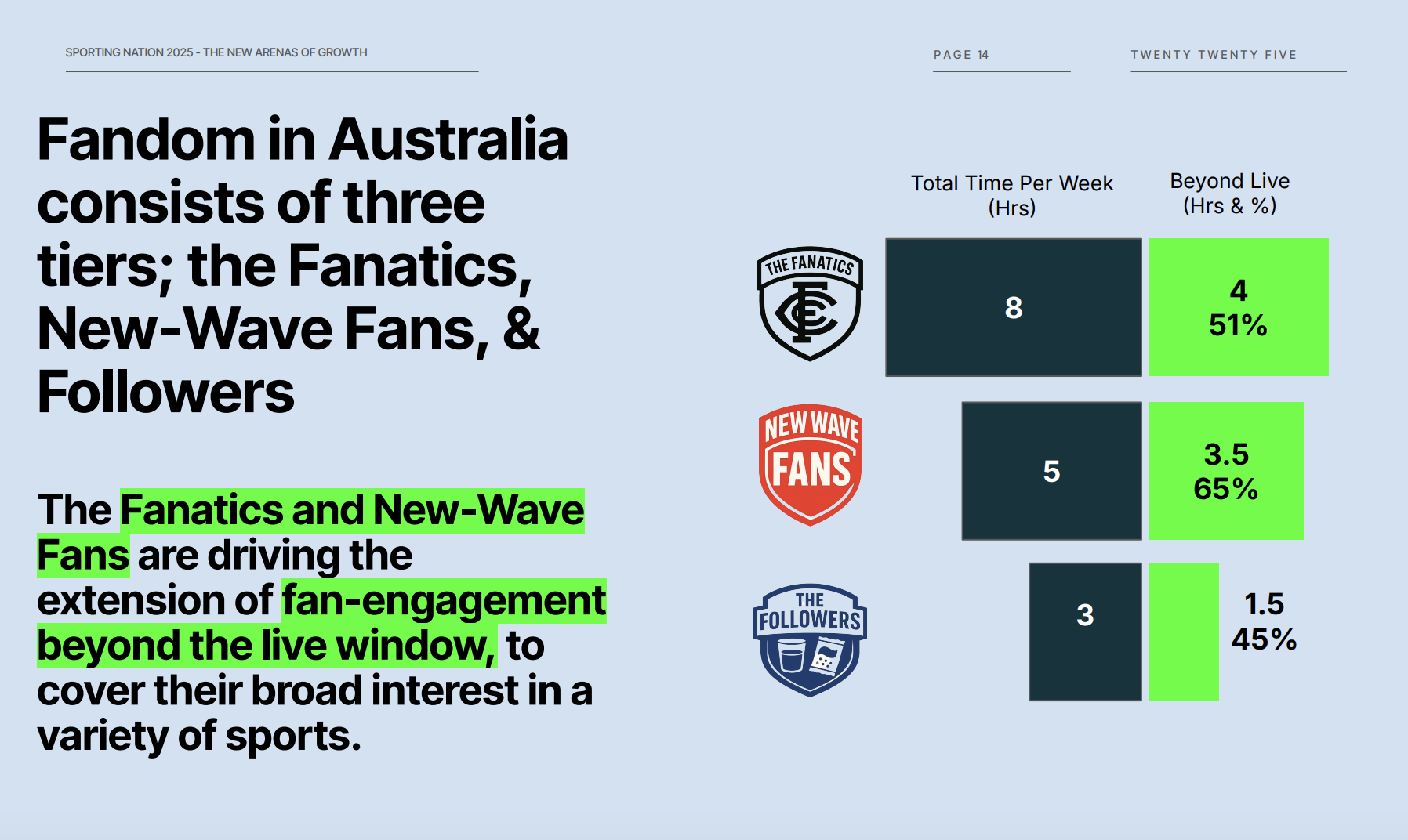
Meet the new tribes of fandom
The study also outlines three types of modern sports fans: Fanatics, who live and breathe their chosen sport; New-Wave Fans, who are digital-first and follow both local and global codes; and Followers, the casual crew who tune in mainly for the social buzz.
Leigh Lavery, Head of Commercial at The Growth Distillery, said brands need to rethink their approach to connect with these groups. “To capture passion at scale in sport, brands need to move beyond a traditional focus on live games and embrace a multi-sport strategy that activates across four new engagement arenas,” Lavery said.
“This is the key to unlocking passion at scale today, reaching not only the die-hard Fanatics but critically the rapidly growing wave of New-Wave Fans.”
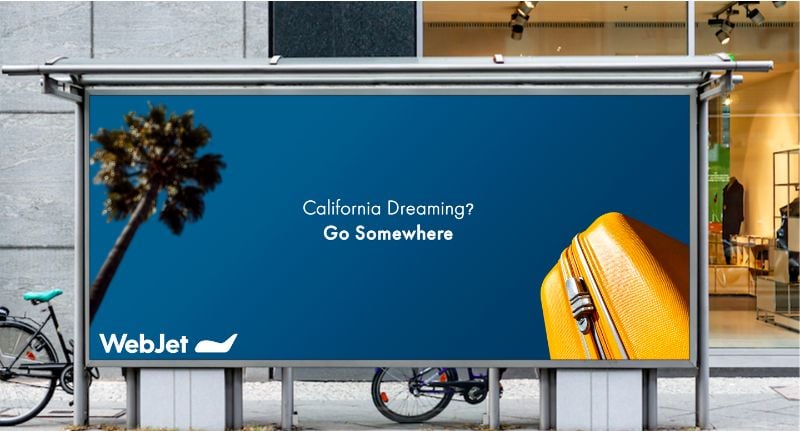
Webjet unveils bold brand transformation to become Australasia's go-to travel companion
Webjet is officially going somewhere new.
The travel brand has unveiled a complete transformation, including a new creative platform and campaign titled Go Somewhere, developed with creative, media and measurement agency The Hallway.
The shift marks the biggest brand overhaul in Webjet’s 27-year history and follows its demerger from Webjet Limited in 2024. The business used the opportunity to dig deep, conducting an extensive review of 3,500 customers and non-customers.
The findings pointed to one thing: while Webjet has high awareness and trust, there’s room to modernise, move beyond flights, and become a true travel companion.
A suitcase with stories to tell
At the heart of the refresh is Go Somewhere, a brand platform designed to reignite the joy of travel. The campaign takes a witty, character-led approach, with suitcases breaking out of everyday monotony and spilling their secrets in a series of stop-motion films directed by Spencer Susser.
“This brand platform and campaign is way more than the sum of its parts,” said Dan Saunders, Executive Creative Director at The Hallway.
“Travel marketing is awash with the same old tropes and imagery. To stand out, we knew we needed something brave. Bringing under-utilised suitcases to life seemed a fun way to do this, and a step outside of the norm.”
Backed by a significant increase in media investment, Go Somewhere is rolling out across TV, cinema, CTV, online video, social, audio, and OOH.
The Hallway led the strategy, with Nunn Media on implementation, and the mix was guided by a sophisticated new marketing mix model built to maximise impact and brand consideration.
A modern identity for modern travellers
Webjet’s refreshed identity marks a confident new chapter for the brand. Its iconic plane logo has been reimagined, honouring its heritage while signalling progress, and paired with a sleek new wordmark and website design.
The upgrade extends to an expanded product offering across hotels, packages, tours and business travel, creating a more seamless one-stop travel experience for Australians and New Zealanders.
Chief marketing officer Oonagh Flanagan said the goal was to capture the emotion behind every journey: “Travel planning should feel rewarding and spark joy at every step. With this refresh we wanted to bottle the travel buzz – that energy, emotion and pure joy you feel when the suitcase comes out and adventure calls.”
Echoing that sentiment, The Hallway CEO Jules Hall said Go Somewhere encapsulates Webjet’s next era. “Webjet is part of the cultural fabric of Aussie and Kiwi travel,” he said. “This new platform is a call to arms for travellers across the region to book their next trip with Webjet.”
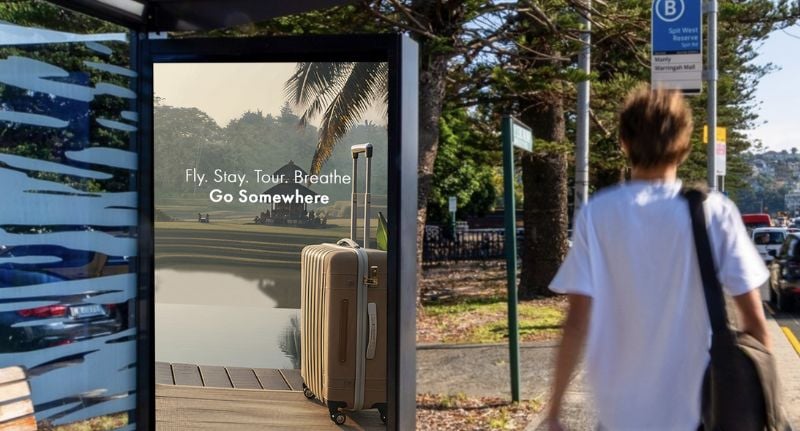
Credits
Creative: The Hallway
Media & Measurement Strategy: The Hallway
Media Implementation: Nunn Media
Production Company: Collider
Director: Spencer Susser
Managing Director: Rachael Ford-Davies
Executive Producer: Tom Slater
Producer: Annie Schutt
DOP: Shelley Farthing-Dawe
Stop Motion DOP: Simon Higgins
Animators: Norman Yeend, Jonathan Chong, Clem Stamation, Susie Shapones
Production Designer: Mike Price
Miniature Sets: Warren Barnard
Editor: Tim Eddy
Post Production: Stage 23
Audio Production: Mosaic Music & Sound
Composer: Adam Moses
Sound Engineer: Michael Thomas
EP: Bill Doig
Voiceover Casting: Stevie @ McGregor Casting
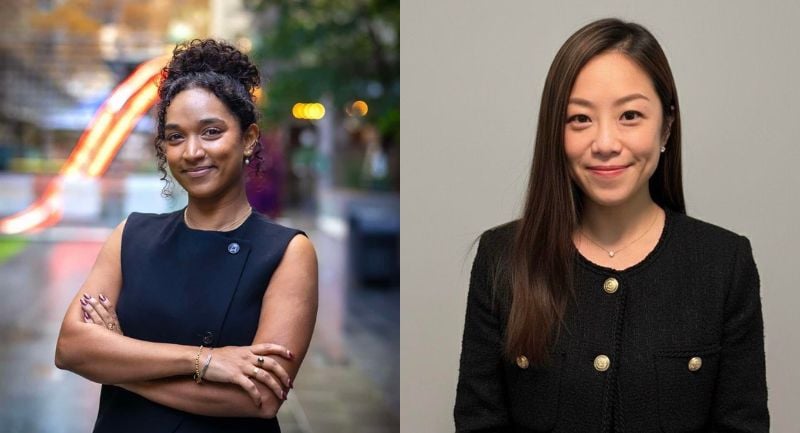
Quantcast bolsters ANZ and APAC growth with new senior sales hires
Quantcast has strengthened its sales operations across Australia, New Zealand, and Asia-Pacific, announcing four senior appointments to support growing demand in the region.
Eric Swenson joins as Senior Sales Manager for ANZ and Amanda Cooper as Sales Manager for ANZ, both based in Sydney. Meanwhile, Nelly Tsang and Chris Ng have been appointed Senior Sales Managers for North Asia, operating from Hong Kong and reporting to Quantcast Managing Director for North Asia, Sally Ng.
In their new roles, Swenson will focus on expanding Quantcast’s relationships with independent agencies and brands, while Cooper will drive client growth through data-led, audience-first strategies. Ng will lead business development for North Asia, with Tsang overseeing strategic sales growth across the region.
Experienced media professionals join Quantcast
Swenson brings more than 15 years of experience in the Australian digital media sector, having held senior roles at News Corp Australia, Fairfax Media, Say Media and Allure Media. Most recently, he was National Sales and Marketing Manager at The Insiders Agency.
Cooper joins from VMO, where she spent six years in senior client management roles, working with agencies including Wavemaker, Mindshare and EssenceMediacom. She began her career as a graphic designer at the Daily Press Group and Marsh before transitioning into media sales and account management.
In North Asia, Tsang brings more than a decade of experience across Hong Kong and Taiwan, most recently as Senior Sales Manager at ComScore. Her background includes roles at Dow Jones, Elle Magazine, and Yahoo!, leading digital advertising and analytics initiatives.
Ng, who previously served as Associate Programmatic Sales Director at JCDecaux Transport, has over ten years’ experience in ad tech and martech. His earlier roles include sales positions at AnyMind Group, Appier, Yahoo! Hong Kong and Omnichat.
Focus on growth and client performance
Jordan Khoo, Quantcast VP of APAC, said the appointments reflect the company’s ongoing investment in people and markets across the region.
“We are thrilled to welcome our new sales leaders to the business. All four are highly accomplished media sales and marketing professionals, with strong track records in client partnerships, campaign delivery and business growth,” Khoo said.
“Eric and Amanda are welcome additions to our ANZ team, bringing significant expertise in creating meaningful client relationships and accelerating revenue growth through measurable impact. Nelly and Chris will be a critical part of our APAC sales team, using their unique understanding of delivering sophisticated, data-driven solutions for enterprise clients across the region.”
All four appointments are effective immediately.
Top image: Amanda Cooper & Nelly Tsang
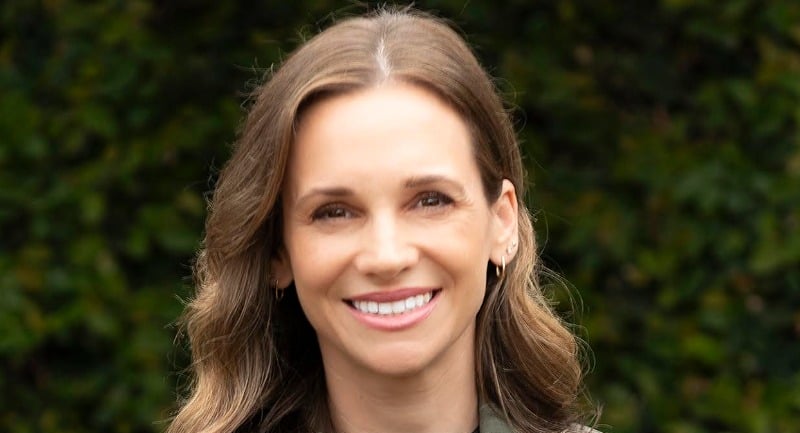
Tonic promotes Georgia Coleman to managing director amid trans-Tasman growth
Tonic Communications has promoted Georgia Coleman to managing director, following strong year-on-year growth and the expansion of its trans-Tasman offering across Australia and New Zealand.
Effective immediately, Coleman will oversee Tonic’s newly established hubs in both countries, driving innovation across the agency’s communications disciplines and supporting further team growth.
Launched by parent company Attivo in February 2024, Tonic was founded with Coleman as general manager to deliver earned, social, influencer and events work in collaboration with Attivo’s broader agency network.
Sue Squillace, CEO of Attivo ANZ, said the promotion reflected Coleman’s impact on Tonic’s performance: “Georgia has done an amazing job growing Tonic’s business in both markets building capabilities, scope and footprint. She led a strong expansion of services into Australia, drawing on her experience across both markets while collaborating with Attivo’s brand and media agencies on projects for RSPCA, Bosch, Arla Foods and the Women’s Asian Cup 2026.”
“We are incredibly proud of the new business growth she has achieved and have no doubt that as MD she will take Tonic to even more success in the future.”
Coleman said the new role was about continuing to build momentum: “I’m incredibly proud of the team we’ve built and the partnerships we’ve formed since launching Tonic. From day one, our focus has been on delivering work that earns attention and creates real, lasting impact.
“Stepping into the MD role is about continuing that momentum – growing our people, strengthening our trans-Tasman footprint, and ensuring Tonic stays as the agency that clients trust for strategic thinking, innovative ideas and genuine heart.”
Tonic Communications operates in both New Zealand and Australia, working with clients across hospitality, FMCG, retail, design, events and non-profit sectors. The agency is part of the Attivo network, which includes 303 MullenLowe, Mediahub, Farrimond, DNY, Hill Holliday and The Next Practice, with operations across Australia, New Zealand and the U.S.
Top image: Georgia Coleman
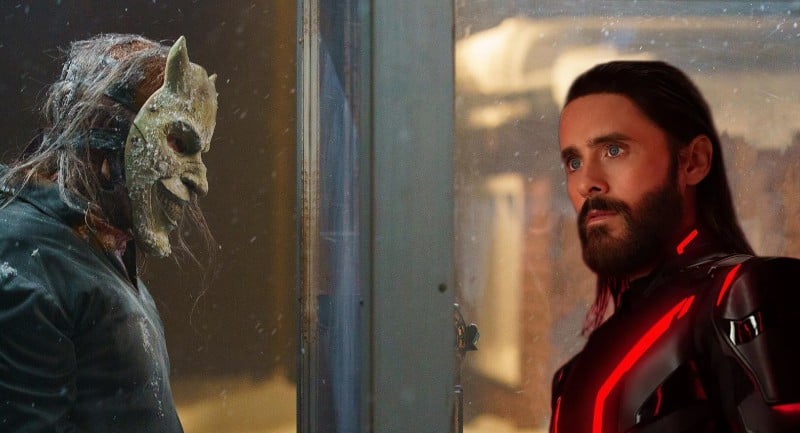
Audiences pick up for The Black Phone 2 as Jared Leto holds on for Tron: Ares
With the school holidays box office bounce behind us, the top 20 films at the Australian box office grossed $5,789,571, a 28 per cent drop from last weekend’s $8,033,407. The per-screen average was $1,578, down from $2,238 last week. This weekend saw The Black Phone 2, a sequel to a surprise 2022 horror hit debut, knocking Tron: Ares from first spot.
While reviews haven’t been strong for Tron: Ares, it retains an 86 per cent audience favourability, suggesting that while it may struggle to make its pricey budget back, it’ll linger in the top 10 for longer than naysayers would suggest.
Top five
1. Black Phone 2
Making its debut at the top of the charts is the sequel to 2022’s horror hit Black Phone. Blumhouse brought back the stars of the first film for this second instalment, with Ethan Hawke, Mason Thames, Madeleine McGraw, and Jeremy Davies returning. Also back is director Scott Derrickson, who also co-wrote this and the original alongside regular collaborator C. Robert Cargill. With 85 per cent audience approval, Blumhouse has done right by the franchise, avoiding the mistakes made with its M3GAN 2.0 sequel which thudded at the box office earlier this year after efforts to broaden its appeal.
For the opening weekend, the film made $1,399,156 across a 338 screen count. That’s a per screen average of $4,140.
That’s an improvement on the 2022 original film, which saw just $1,011,200 across 300 screens – a per screen average of $3,371.
Synopsis: Bad dreams haunt 15-year-old Gwen as she receives calls from the black phone and sees disturbing visions of three boys being stalked at a winter camp. Accompanied by her brother, Finn, they head to the camp to solve the mystery, only to confront the Grabber – a killer who’s grown even more powerful in death.
2. Tron: Ares
Entering week 2, the film saw a 58 per cent drop to land at $930,529. That’s across a whopping 401 screens, with a $2,321 per screen average.
The film is the third instalment in the Tron franchise, which was a 1982 Jeff Bridges film. Jared Leto joins the franchise with this film, with Bridges back a third time in a much smaller supporting role.
Synopsis: Mankind encounters AI beings for the first time when a highly sophisticated programme, Ares, leaves the digital world for a dangerous mission in the real world.
3. One Battle After Another
Entering week four of release, One Battle After Another maintains a strong box office hold as it firmly grips onto third place. Dropping 39 per cent, it pulled in $618,252 across 282 screens. That’s a per screen average of $2,192.
It has continued to hold its adult audience despite competition from titles like the Julia Roberts-led specialty release After The Hunt debuting.
Synopsis: Bob is a washed-up revolutionary who lives in a state of stoned paranoia, surviving off-grid with his spirited and self-reliant daughter, Willa. When his evil nemesis resurfaces and Willa goes missing, the former radical scrambles to find her as both father and daughter battle the consequences of their pasts.
4. Roofman
Channing Tatum has quietly slipped onto local screens with the well-reviewed Roofman. With 85 percent critics and audience scores on Rotten Tomatoes, the film has been well-received by those who have seen it. Despite a 300 screen release, the film brought in just $597,387, which is under half the takings of The Black Phone 2. That’s a per screen average of $1,991.
Synopsis: After escaping from prison, former soldier and professional thief Jeffrey Manchester finds a hideout inside a Toys “R” Us, surviving undetected for months while planning his next move. However, when Jeffrey falls for a divorced mom, his double life starts to unravel, setting off a compelling and suspenseful game of cat and mouse as his past closes in.
5. The Bad Buys 2
In week five of release, kids film The Bad Guys 2 has felt the impact of the end of school holidays. Dropping from second to fifth place, it made $345,286. Total box office since release has been $14,714,777. Playing on 263 screens, that delivers a per screen average of $1,313.
Synopsis: Reformed criminals Mr. Wolf, Mr. Snake, Mr. Piranha, Mr. Shark and Ms. Tarantula are trying very hard to be good. However, they soon find themselves hijacked into a high-stakes heist that’s masterminded by a new team of delinquents they never saw coming… the Bad Girls.
Rounding out the top 10 this week:
6. The Travellers – $300,527 (total gross: $1,132,554)
7. The Rocky Horror Picture Show 50th Anniversary – $221,396
8. Kangaroo – $197,564 (total gross: $4,975,864)
9. Gabby’s Dollhouse: The Movie – $156,348 (total gross: $4,687,798)
10. After The Hunt – $152,323

Turns out Aussies will visit just about anywhere to get their doom scrolling fix
If you’ve ever found yourself scrolling through LinkedIn like it’s Instagram, you’re not alone.
According to new research from iSelect, half of Australians admit to doomscrolling on work-related apps such as Teams, Outlook, or LinkedIn – proof that yes, we really would love to know what your father’s death taught you about B2B sales.
Across the board, we now spend an average of 1.88 hours a day on social media. However, those numbers don’t paint the full picture.
Those aged 18–24 spend more than three hours daily on platforms, and nearly a third of them log more than four. Despite all that screen time, only 9% describe their relationship with social media as “very positive.”

The toll of the scroll
The findings overall paint a pretty stark picture of digital (and thumb) fatigue.
Over half of young Australians (51%) say social media cuts into hobbies and offline life, while 46% admit it distracts them from work or study. Others say the habit keeps them awake at night (40%) or fuels insecurity through constant comparison (37%).
Andres Gutierrez, General Manager – Health at iSelect, said the impact goes beyond the digital sphere. “Constant screen time and exposure to negative news can heighten stress, disturb sleep and contribute to anxiety, while hours spent scrolling often can get replaced by healthier routines like exercising, socialising face-to-face or engaging in hobbies,” he said.
There’s data to back up Gutierrez’s comments. According to ScienceDirect, research links the endless scroll to spikes in anxiety, stress and depression, along with some very offline side effects: headaches, sleep disruption and even high blood pressure.
Experts say the cycle of negative news can deepen existing mental health struggles, creating an anxiety loop that’s hard to break. The behaviour itself even ticks a few boxes for internet addiction. Add in the hours of sitting still while your brain’s on high alert, and it’s clear this digital pastime comes with a physical price tag too.
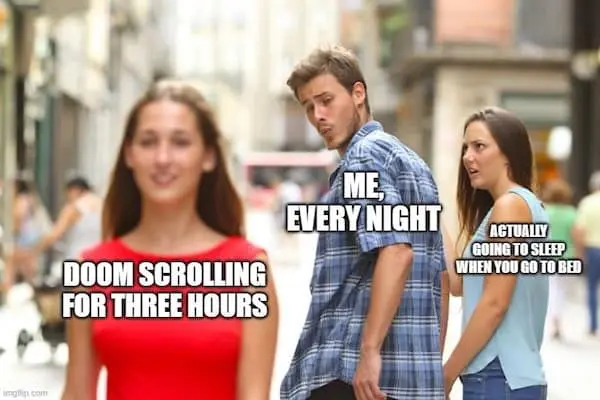
Younger generations caught in the loop
It’s not just how long Aussies scroll, but where.
Among 18–24s, 43% of total screen time is devoted to social media, compared to more varied activity among older groups. For many, platforms like Instagram, TikTok, and yes, even LinkedIn (!!!), have blurred the lines between work, leisure and self-worth.
Gutierrez said building awareness is the first step. “Over time, these patterns may impact both mental and physical well-being. For those struggling with their sleep, mental health or overall well-being, exploring options such as health insurance can provide an added layer of protection, ensuring that support is available when you need it.”
So, while Aussies might be logging off from work, few are actually switching off. Turns out, when it comes to doomscrolling, we’ll tap, swipe, and refresh just about anywhere.
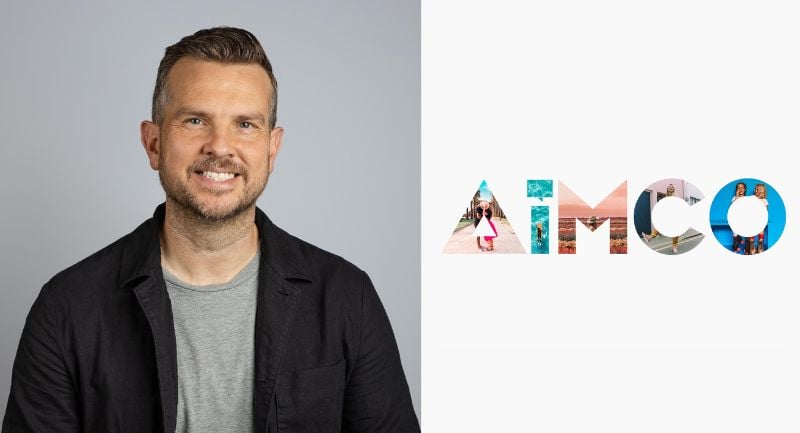
AiMCO launches landmark guide for child and family influencers
The Australian Influencer Marketing Council (AiMCO) has launched a landmark industry resource, the Engaging Child and Family Influencers Industry Information Sheet, to guide brands, agencies and creators when working with children in influencer marketing campaigns.
The document, the first of its kind in Australia, was developed by AiMCO’s Best Practice Child and Family Influencer Working Group to address a critical gap in safeguarding children involved in digital content creation. The sheet outlines how existing child employment protections — typically applied to film, television and advertising — can also extend to the influencer space.
AiMCO managing director Patrick Whitnall said the new framework is designed to educate and inform members about their legal and ethical responsibilities. “Children working in entertainment, which includes advertising, are protected by laws and regulations in Australia. Awareness and education are required for our members to review how these could be applied to the influencer marketing space, which we felt was critically important to address,” he said.
According to Fabulate Discovery Data, more than 275,000 creators in Australia identify as parenting or family influencers, representing one in five of the local creator economy. Whitnall said this rapid growth underscored the need for a formalised approach to child protection and compliance.
“Influencer marketing campaigns can be distinguished from other advertising activities because the creation of influencer marketing content often operates within a child’s private home, and when the child’s sole workplace guardian is the parent or legal guardian. This often results in brands and agencies having little to no direct oversight into the content creation process which occurs in the child’s home environment.” he added.
Developed with national and global input
The working group reviewed a range of regulatory frameworks, including those from the Child Employment Authority, the NSW Office of the Children’s Guardian, and the National Children’s Commissioner, alongside AiMCO’s existing Influencer Marketing Code of Practice. It also drew on international examples to ensure the guidelines reflected global best practice.
Group members included Sarah Fischer Letts (Head of Creative and Strategic Partnerships, Hoozu), Jess Kay (Head of Production, Talentpay), Tegan Boorman (Founder, Social Law Co and AiMCO Chair), and Courtney Barlow (Marketing Communications and Content Manager, Ego Pharmaceuticals).
Barlow said the initiative has already prompted change at Ego Pharmaceuticals. “We will look to adapt our processes when engaging family influencers. The child and family influencer sector is not only new to marketing, it is rapidly growing, and it’s important as brand marketers that we adopt best practice and comply with responsible marketing activity. I’m sure this information sheet will be an invaluable resource for brands and agencies, as well as influencers themselves.” she said.
Part of a wider professionalisation push
The new release follows AiMCO’s series of best practice resources covering taxation and compliance, responsible gifting, and advertising standards for alcohol and therapeutic goods. The council estimates the Australian influencer marketing sector will approach $1 billion in value this year, according to data from Sprout Social.
“The past year has seen unprecedented expansion across the influencer marketing sector,” Whitnall said. “This evolution has elevated our industry, necessitating new levels of professionalism that build confidence and trust in our sector.”
Top image: Patrick Whitnall
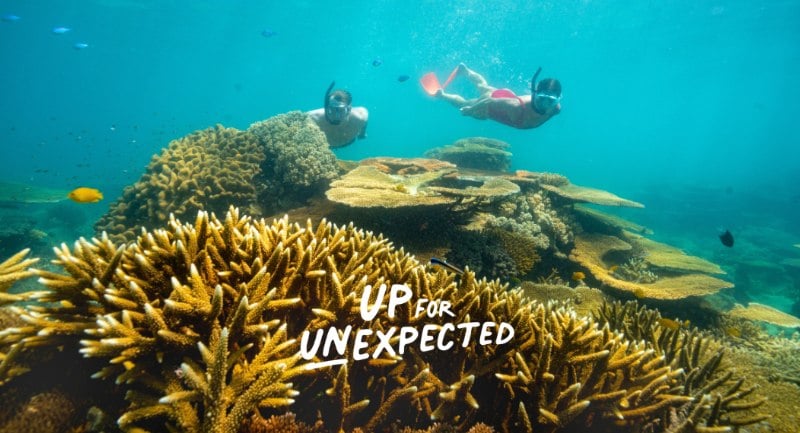
Townsville launches biggest tourism push with dentsu Queensland
Townsville Enterprise, in partnership with Townsville City Council, Tourism and Events Queensland, and the Australian and Queensland Governments, has launched the region’s largest-ever tourism marketing campaign with dentsu Queensland.
The 12-month Up for Unexpected campaign targets travellers in Queensland, Sydney and Melbourne through outdoor, digital, and social media activity, alongside influencer partnerships, PR activations, and brand collaborations with Paramount, Jetstar, Qantas, Expedia, HelloWorld, Urban List and Mamamia.
Fronted by adventure TV host Scott Hillier from Creek to Coast, the campaign positions Townsville North Queensland as a destination offering authentic and memorable experiences. dentsu Queensland led media planning and buying, placing the campaign “in surprising and meaningful contexts.”
Lisa Woolfe, Director of Visitor Economy and Marketing at Townsville Enterprise, said the collaboration demonstrates the power of collective investment in the region’s growth.
“Tourism in Townsville North Queensland is building momentum. In recent months we’ve seen more visitors, major events building our region’s profile and increased cruise ship arrivals,” Woolfe said. “This campaign will take that to the next level – raising awareness of our destination, changing outdated perceptions, and most importantly, delivering more business for local operators.”
Townsville Enterprise expects the campaign to generate more than $50 million in additional visitor spending over the next year.
dentsu Queensland spokesperson Rachel Knight said the agency was proud to help connect travellers with experiences that reflect the region’s warmth and authenticity. “With family ties in regional Queensland, this campaign holds personal significance,” she said. “There’s a warmth and authenticity in Townsville that deserves to be shared.”
Government and council backing
The initiative is supported by a $1 million investment from Townsville City Council and jointly funded by the Australian and Queensland Governments under the Disaster Recovery Funding Arrangements, following this year’s tropical low weather event in North Queensland.
Queensland Minister for the Environment and Tourism Andrew Powell said the $6.4 million funding package for North Queensland is part of the state’s Destination 2045 plan. “Pitching Brand Queensland to the world is a key pillar of our Destination 2045 plan.” Powell said. “Townsville North Queensland is one of the state’s most enticing destinations, attracting more than a million visitors each year – and this campaign will only grow its appeal.””
Acting Townsville Mayor Ann-Maree Greaney said the campaign represents the North’s biggest coordinated marketing effort. “This 12-month campaign is all about showcasing the city’s incredible liveability and growing North Queensland’s reputation as a national tourism destination,” Cr Greaney said. ““This exciting campaign is important not only for the 9,000 locals and hundreds of businesses who rely on tourism, but also for our wider economy as we prepare for 20,000 new jobs to be added in the next five years – Townsville is growing and ready to welcome these workers of the future..”
Agency momentum continues
For dentsu Queensland, the launch adds to a strong year of growth, with recent milestones including the appointment of Laura Henry as Head of Strategy, new media wins with Shine Justice, and retention of The Lottery Corporation. The agency was also named among The Australian Financial Review’s Best Places to Work and had two executives recognised in AdNews’ Emerging Leaders list.
Its expanding tourism client roster includes Tourism and Events Queensland, Brisbane Economic Development Agency, Experience Gold Coast, Tourism Whitsundays, Tourism Tropical North Queensland, Visit Sunshine Coast and others.
Media
Trump’s Pentagon memo warns media off leaks
According to Crikey’s Daanyal Saeed, a fresh memo warns against “unauthorised disclosures”, a move media outlets say criminalises standard reporting.
Agencies
Accenture Song boss says marketers are missing the point on AI
The Australian’s Danielle Long reports Oteh made the comments while speaking at SXSW Sydney, arguing CMOs should prioritise growth and brand outcomes, not how many AI tools they can build.
Companies
AWS outage sends internet into chaos
The Australian Financial Review’s Amelia McGuire writes the disruption caused global headaches for businesses and users alike.
BBC investigates the AWS outage
And if you’re keen to follow Alice into the rabbit hole and learn more about internet outages, the BBC has compiled this panic-inducing article.
Ticketmaster cracks down on multiple accounts and scalpers
The Hollywood Reporter’s Ethan Millman writes the ticketing giant told US lawmakers it will soon block users from holding multiple accounts on its platform, a move prompted by an FTC lawsuit accusing the company of colluding with scalpers and breaching the BOTS Act.
Social media
Meta study finds Instagram fuels teen body image issues
As Jeff Horwitz reports for Reuters, across 1,100 teens surveyed, those who felt bad after scrolling saw this type of content 10% of the time, triple that of their peers.

